Dear Artist,
One of the most engaging aspects of Greyhound, Tom Hanks’ new film about the 1942 Battle of the Atlantic, is the toothsome machinery of Hanks’ Fletcher-class destroyer and the near-seamless chain of command protocols of his crew. The film tells the story of a U.S. Navy Commander on his first wartime assignment — shepherding a multi-national escort group to defend a convoy of merchant ships coming under attack by German U-boats. An imperfect and inexperienced leader relies on his responsibility, his crew and the instincts of a single sonar operator while out of range of protective air cover for five days in an area in the Atlantic, called the “Black Pit.” While there have been more artful and character-driven films on the subject, Greyhound is still a reminder of the power of problem-solving, how much making it up as we go along plays into the outcomes of our stories and how important executive function is to “winging it.”
Executive function is a set of mental skills that includes working memory, flexible thinking and self-control. Sometimes called “the management system of the brain,” these skills are used to learn, communicate, relate to others, work and manage life. Difficulty with these skills, like trouble focussing, following instructions or managing emotions, are often associated with cognitive challenges, ADHD, autism and addiction. In art, executive function is what switches on when we’re learning to paint, composing, making assured creative decisions, planning work in sequence, managing studio dynamics and problem solving. Like when hurling depth charges into the open sea, it’s best to take into account where you think the submarine will be, how much fuel you have and the exact moment to dodge the incoming torpedo. It may, at times, be impossible to plan, but kicking into gear these three main kinds of cognitive skills is likely a good first start:
Non-verbal and verbal working memory: The ability to keep something in mind and then use it.
Cognitive flexibility: The ability to think about something in more than one way.
Self-control: The ability to ignore distractions and resist temptation.
In addition to these are the super-skills of reflection and self-awareness, processing speed and being able to do all of this stuff while emotionally aroused — like being on a battleship, say. Called “hot executive function,” this super power is worth practising at the easel, while thankful that the object is simply the limitless human expression called “art” — and not life or death in the freezing, midnight mid-Atlantic.
Sincerely,
Sara
PS: “I throw a spear into the darkness. That is intuition. Then I must send an army into the darkness to find the spear. That is intellect.” (Ingmar Bergman)
Esoterica: Executive function can be developed and improved over a lifetime, though it’s often first assessed when we’re in grade school. Similarly, cognitive processes can be adversely affected by life events, special needs, illness, trauma and other factors. In the Stroop Test, used by psychologists to measure reaction time between congruent and incongruent stimuli — names of colours, printed in that colour, appear in a list and the subject is asked to read the list aloud. A second list then appears, where the colour names are printed in the wrong colour. The test measures the delay in reaction time — called the “Stroop Effect” — the time it takes to read aloud the incongruently-coloured, colour names. If you’re still with me, you can take the test on the University of Washington’s clunky website, here. Researchers are currently using the Stroop
Effect to measure regions of the brain involved in real-world interferences, like texting while driving.
The 2020 film Greyhound, released on July 10, is available to stream on apple tv.
Have you considered a Premium Artist Listing? With each letter, an artist is featured at the bottom of this page. The Premium Artist Listings are a means of connecting artist subscribers through their work. Proceeds from each listing contribute to the production of The Painter’s Keys.
“We only have our nervous system to paint.” (Francis Bacon)
Featured Workshop
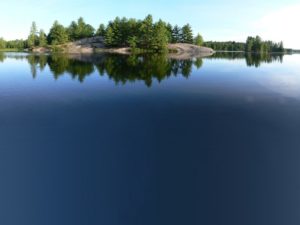 This retreat is an homage to early pioneers of plein air painting. We canoe-in and camp, paddling every day to our painting locations. This is a self-catered trip. We provide the canoes, life jackets and instruction. You bring your own provisions, tents, etc. The scenery in Kawartha Highlands is fantastic. Bald rock faces, sparkling lakes, majestic trees. Every direction you turn is another painting. Your instructor, Keith Thirgood, has been camping and canoeing all his life, and teaching artists his own unique approach to painting for over 12 years. Learn how to find order in the chaos, control your colours and create paintings that work. Learn modern colour theory, values, shapes and lines, what makes for a good painting.
This retreat is an homage to early pioneers of plein air painting. We canoe-in and camp, paddling every day to our painting locations. This is a self-catered trip. We provide the canoes, life jackets and instruction. You bring your own provisions, tents, etc. The scenery in Kawartha Highlands is fantastic. Bald rock faces, sparkling lakes, majestic trees. Every direction you turn is another painting. Your instructor, Keith Thirgood, has been camping and canoeing all his life, and teaching artists his own unique approach to painting for over 12 years. Learn how to find order in the chaos, control your colours and create paintings that work. Learn modern colour theory, values, shapes and lines, what makes for a good painting.Featured Artist
Christine Hanlon, whose work has been compared to that of Edward Hopper, creates ‘urban landscapes which quietly exude atmosphere.’

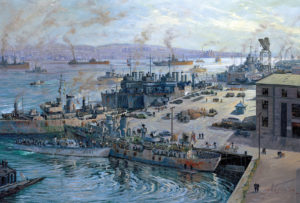
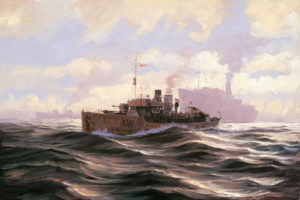
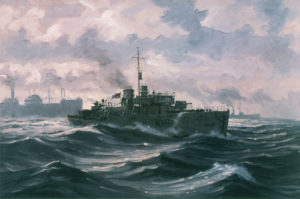
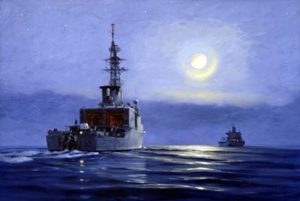
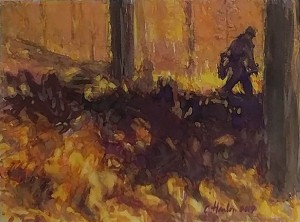



11 Comments
Sara,
This is just one of your best articles!
Thank you
Interesting test. Surprising that I completed the second part 2.3 seconds faster than the first. But then, I wasn’t trying to be very fast on the first one. Does that matter? Or more pointedly, does it matter when I’m creating art?
Sara,
Rarely do I leave a message but today prompted me to do so. Your writing has evolved so beautifully. At times I hear your father is voicing your words. But your own voice has evolved into something so unique and beautiful.
My father died from cancer a few months earlier than yours. He was also a great lover of the arts. We would travel and visit galleries together. He had a massive fine art collection. Thankful he lived long enough to see the painter and teacher I had become.
Thank you so much❤️
I read with interest your description of Tom Hanks new movie Greyhound which I have not yet seen, but heard many stories from my father who passed away at the age of 97 last April of his time in the Navy on an escort vessel going between Halifax and Londonderry , Ireland. I then was pretty astonished to see the paintings of the Sackville, which was my father’s last ship when the war ended. He was first a sonor technitian and then became a radar operater when it was a top secret new program during the war. I’m sure the movie will give me new insight into the skills required of all those brave young men. My father was only 16 when he joined the navy! Sara, thank you very much for this post!
Maxine – May I suggest the classic film on the Battle of the Atlantic is the 1953 film ‘The Cruel Sea’ based on Nicholas Montsarrat’s novel of the same name – told from a British perspective.
The film begins ‘This is a story of the Battle of the Atlantic, the story of an ocean, two ships, and a handful of men. The men are the heroes; the heroines are the ships. The only villain is the sea, the cruel sea, that man has made more cruel…’
Having said that, I’m sure ‘Greyhound’ will be worth watching as is anything with Tom Hanks in it.
Best wishes
Frank
War is something we try not to think about but is often forced on us. To be a problem thinker is a gift and we need to encourage this in our children. By spoiling them as they grow up can leave your child a lost soul that has no understanding of earning. I know all this is generalizing the issue but entitlement is now a problem and stems back to the parents. In the beginning I mentioned “War” now I do not want to start one! Peace
Thank you Sara for this fascinating letter and your insights. I especially relate to the art practice/battlefield analogy.
This was a profound newsletter hidden in a movie review! I will keep this and share with my family. Thank you again, Sara for your perceptive observations and intellect.
Thank you Sara for writing about executive function and the creation of visual art. I had been creating painterly representational work for more than 30 years until I suffered a traumatic brain injury to the prefrontal cortex in 2016. Once I regained enough stamina to return to my studio, I found it overwhelming to plan and execute the type of work I had previously done. Instead, I began cutting and tearing old work and creating collages in an intuitive manner using the elements and fundamentals of design. I am thoroughly enjoying the process of creating visual art again. It’s been healing in many ways.
Thank you for The Painter’s Keys, I enjoy your thoughtful writing and inspiration.
Sara,
I just realized this morning that it has been a few months since a Painters Keys letter landed in my in box.
I enjoyed them immensely and tried to subscribe again but it won’t allow me to as my email address is already in use. Can you please fix that for me? My address is kathleen@kmcdermottart.com.
Thank you.
Kathy McDermott
You’d better (You had better) … : http://bellybuttonpain.site